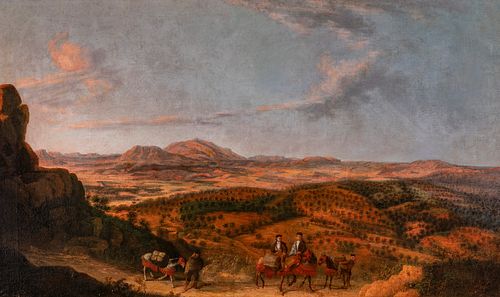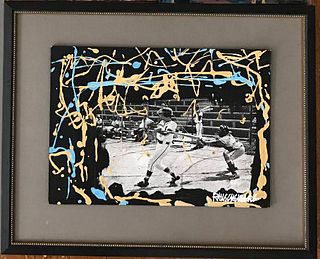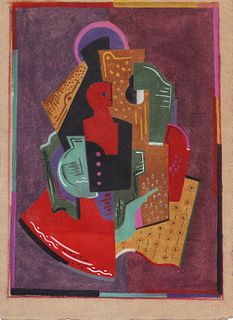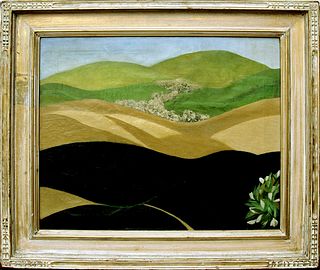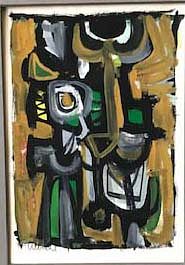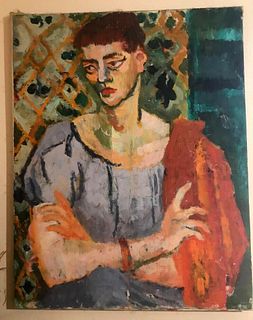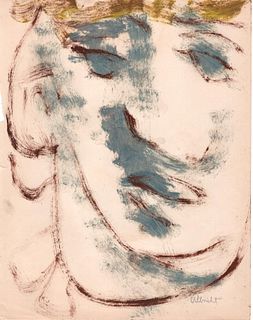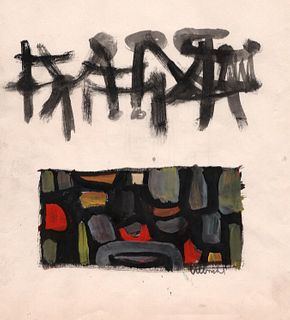Circle of MANUEL BARRÓN Y CARRILLO (Seville, 1814 - 1884). "Andalusian landscape". Oil on canvas.
Lot 53
About Seller
Setdart Auction House
Carrer Aragó 346
Barcelona
Spain
Setdart Subastas was born in 2004 and is currently the first online art auction in Spain with solidity, prestige and reliability guaranteed by our more than 60,000 users. Setdart has a young, dynamic and enterprising team ready to successfully manage the purchase and sale of art works through custom...Read more
Estimate:
EUR€2,500 - EUR€3,000
$2,688.17 - $3,225.81
Absentee vs Live bid
Two ways to bid:
- Leave a max absentee bid and the platform will bid on your behalf up to your maximum bid during the live auction.
- Bid live during the auction and your bids will be submitted real-time to the auctioneer.
Bid Increments
| Price | Bid Increment |
|---|---|
| EUR€0 | EUR€10 |
| EUR€200 | EUR€25 |
| EUR€500 | EUR€50 |
| EUR€1,000 | EUR€100 |
| EUR€3,000 | EUR€200 |
| EUR€5,000 | EUR€500 |
| EUR€10,000 | EUR€1,000 |
| EUR€20,000 | EUR€2,000 |
| EUR€50,000 | EUR€5,000 |
About Auction
By Setdart Auction House
Nov 10, 2021
Set Reminder
2021-11-10 08:00:00
2021-11-10 08:00:00
America/New_York
Bidsquare
Bidsquare : 19th & 20th Century paintings and Decorative Arts
https://www.bidsquare.com/auctions/setdart-auction-house/19th-20th-century-paintings-and-decorative-arts-7800
Setdart Auction House sofia@setdart.com
Setdart Auction House sofia@setdart.com
- Lot Description
Circle of MANUEL BARRÓN Y CARRILLO (Seville, 1814 - 1884). "Andalusian landscape". Oil on canvas. Presents repainting and period frame. Measurements: 69 x 118 cm; 96 x 145 cm (frame). Giving a greater importance to the landscape than to the small figures that are inscribed in it, in this work the author tries to prioritize the representation of the local landscape, dominated by the ochre tonalities, which define an arid, dry and depopulated land that can be a refuge for the bandits. The artist follows a classical type of composition, developing a view in depth. Thus, the masses that make up the orography are evenly distributed, although not in parallel planes but in perspective, achieving a more naturalistic effect. The scene is reminiscent of the painting of the artist Manuel Barrón y Carrilo, the greatest exponent, and possibly the best representative, of Andalusian and Sevillian romantic landscape painting. Manuel Barrón studied at the School of Fine Arts of Santa Isabel de HungrÃa, in Seville, between 1828 and 1832, with Antonio Cabral Bejarano as his teacher. The other figure who influenced his work was the Scottish painter David Roberts, with whom he spent some time in Seville in 1833. He may also have met Jenaro Pérez Villamil, the first and foremost cultivator of romanticism in Spain, only seven years older than Barrón. Barrón spent his entire life in Seville, where he combined painting with teaching, teaching drawing, perspective and landscape at the School of Fine Arts. José Jiménez Aranda was one of his most outstanding students. Academic of Santa Isabel de HungrÃa, founding member of the Artistic Lyceum of the city of Seville (1838) and of the Economic Society of Friends of the Country, his teaching career culminated in his appointment as director of the School of Fine Arts. His works were highly valued during his life, which earned him a notorious fame. He attended the National Exhibitions of Fine Arts held in Madrid, and in 1862 Queen Isabel II acquired his canvas "Vista general de Sevilla", which is currently in the palace of RiofrÃo, in Segovia. Manuel Barrón is represented in the Prado Museum, the Museum of Fine Arts of Seville, the Romantic Museum of Madrid and the Carmen Thyssen-Bornemisza Collection, among others.
- Shipping Info
-
In-house shipping available. Please inquire at admin@setdart.com.
-
- Buyer's Premium



 EUR
EUR CAD
CAD AUD
AUD GBP
GBP MXN
MXN HKD
HKD CNY
CNY MYR
MYR SEK
SEK SGD
SGD CHF
CHF THB
THB